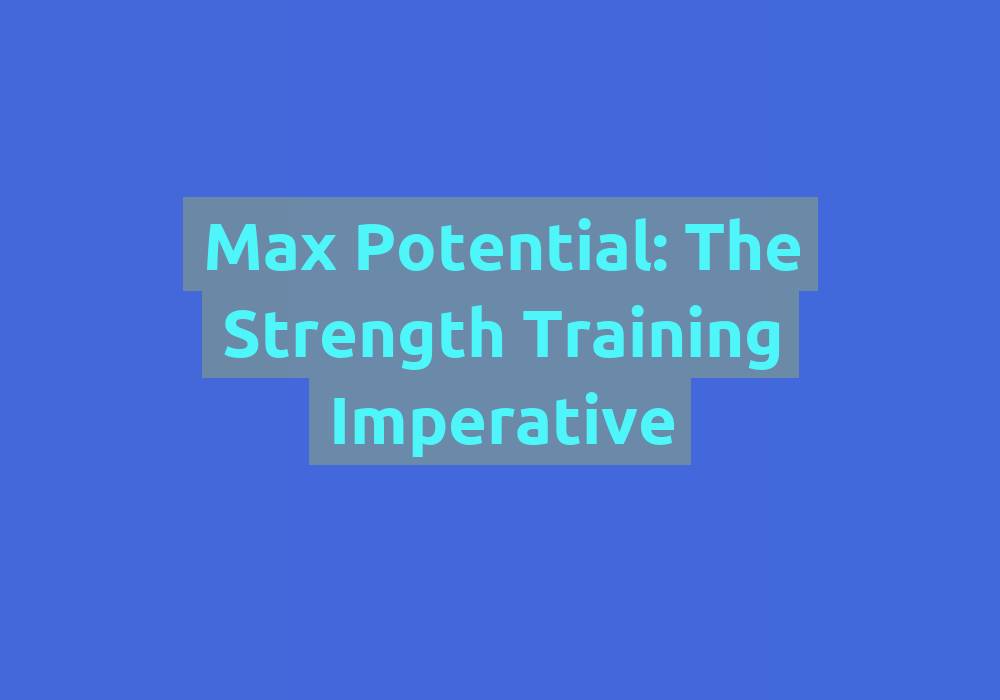Ketosis 101: Beginning Your Keto Diet Journey

Are you interested in embarking on a keto diet journey? If so, you’ve come to the right place! In this comprehensive guide, we will walk you through the basics of ketosis and provide valuable insights into starting your keto diet journey successfully.
Understanding Ketosis
Before we dive into the details of starting a keto diet, it’s essential to grasp the concept of ketosis. Ketosis occurs when your body enters a metabolic state where it primarily uses fat for fuel instead of carbohydrates. This happens when you limit your carbohydrate intake and increase your consumption of healthy fats.
When you follow a keto diet, your body shifts from relying on glucose (sugar) for energy to burning stored fat. This metabolic shift can have numerous benefits, including weight loss, increased energy levels, improved mental clarity, and enhanced overall health.
Ketosis is achieved by following a low-carbohydrate, high-fat diet. By reducing your carbohydrate intake to around 20-50 grams per day, you force your body to enter a state of ketosis. In this state, your liver produces ketones, which are utilized as an alternative fuel source. Instead of relying on glucose derived from carbohydrates, your body starts burning stored fat for energy.
The benefits of ketosis extend beyond just weight loss. When your body is in ketosis, it becomes more efficient at utilizing fat for fuel, which can result in increased energy levels. Many individuals report experiencing enhanced mental clarity and improved focus when in a state of ketosis. Additionally, ketosis has been shown to have positive effects on various health markers, such as reducing inflammation and improving insulin sensitivity.
Getting Started on Your Keto Journey
Now that you have a basic understanding of ketosis, let’s explore the steps to get started on your keto diet journey:
1. Set Clear Goals
Before starting any diet, it’s crucial to define your goals. What do you want to achieve with the keto diet? Is it weight loss, better mental focus, increased energy, or improved overall health? Setting clear goals will help you stay motivated and track your progress throughout your keto journey.
When setting goals, it’s important to be specific and realistic. For example, instead of saying “I want to lose weight,” set a specific target such as “I want to lose 10 pounds in the next three months.” This way, you can measure your progress and make adjustments if necessary.
2. Educate Yourself
To ensure a successful keto diet journey, it’s essential to educate yourself about the principles and guidelines of the diet. Familiarize yourself with different food groups, macronutrient ratios, and the types of foods you can eat while on a keto diet. Knowledge is power, and understanding the basics will make your journey smoother.
Start by learning about the different types of fats, proteins, and carbohydrates. Not all fats are created equal, and it’s important to focus on consuming healthy fats such as avocados, nuts, and olive oil. Similarly, not all proteins are keto-friendly, as some may contain hidden carbohydrates. Be aware of the carb content in foods and choose sources of protein that are low in carbs.
Understanding the concept of net carbs is also crucial. Net carbs are calculated by subtracting the grams of fiber from the total grams of carbohydrates in a food item. Since fiber is not digested by the body, it doesn’t impact blood sugar levels and can be subtracted from the total carb count. This allows you to focus on the net carb content of foods, which is what truly matters on a keto diet.
3. Plan Your Meals
Meal planning is a key aspect of any successful diet. Create a meal plan that includes a variety of low-carb, high-fat foods such as meat, fish, eggs, vegetables, and healthy fats. Incorporate a wide range of colorful vegetables to ensure you’re getting essential nutrients while keeping your carbohydrate intake in check.
When planning your meals, aim for a balance of macronutrients. Each meal should include a source of protein, healthy fats, and low-carb vegetables. This will help you feel satisfied and provide your body with the necessary nutrients.
Consider batch cooking and meal prepping to save time and ensure you always have keto-friendly meals available. This involves preparing larger quantities of food in advance and portioning them out for the week. Having pre-prepared meals can be a lifesaver on busy days when you don’t have time to cook.
4. Calculate Your Macros
Macronutrients, commonly referred to as macros, are the three main components of our diet: fats, proteins, and carbohydrates. On a keto diet, you will need to adjust your macros to maintain a state of ketosis. Use online calculators or consult with a nutritionist to determine the ideal macronutrient ratio for your body and goals.
The standard macronutrient ratio for a keto diet is typically around 70-75% of calories from fat, 20-25% of calories from protein, and 5-10% of calories from carbohydrates. However, these ratios can vary depending on individual needs and goals.
Tracking your macros can be done using various smartphone apps or online tools. This allows you to monitor your daily intake and ensure you’re staying within your desired macronutrient range. By tracking your macros, you can make adjustments as needed and optimize your progress on the keto diet.
5. Start Slowly
Transitioning to a keto diet can be challenging for some individuals. Consider gradually reducing your carbohydrate intake instead of cutting them off abruptly. This approach can help mitigate the symptoms of the keto flu, a temporary set of symptoms experienced by some people when switching to a low-carb diet.
The keto flu is a collection of symptoms that can occur during the initial stages of transitioning to a keto diet. It is typically caused by the body adapting to using fat for fuel instead of carbohydrates. Common symptoms include fatigue, headaches, irritability, and brain fog.
To minimize the impact of the keto flu, start by gradually reducing your carbohydrate intake over a period of a few weeks. This allows your body to adjust more smoothly and can help alleviate some of the symptoms. Additionally, ensure you stay hydrated and increase your intake of electrolytes, as these can also help alleviate symptoms.
6. Stay Hydrated
Proper hydration is crucial on a keto diet, especially during the initial stages when your body is adjusting to burning fat for fuel. Drinking enough water not only helps maintain your overall health but also assists in reducing potential side effects such as constipation, which can occur due to a lack of fiber-rich foods.
In addition to water, consider incorporating herbal teas and broths into your daily routine. These can provide electrolytes and help replenish minerals that may be lost during the initial stages of ketosis.
It’s important to note that increased water intake can lead to increased urination, which can result in the loss of electrolytes. To counteract this, make sure to include sources of electrolytes in your diet, such as sodium, potassium, and magnesium. This can be achieved through foods like avocados, nuts, leafy greens, and supplementation if necessary.
7. Incorporate Physical Activity
Exercise is an essential component of any healthy lifestyle, including a keto diet. Engaging in regular physical activity can enhance the benefits of ketosis, promote weight loss, improve cardiovascular health, and boost overall well-being. Choose exercises that you enjoy and find ways to incorporate them into your daily routine.
When starting a keto diet, you may experience a temporary decrease in energy levels due to the adjustment period. However, as your body becomes more efficient at utilizing fat for fuel, your energy levels should improve. Regular exercise can further enhance this process by increasing metabolism and promoting fat burning.
Consider incorporating a combination of cardiovascular exercises, such as walking, cycling, or swimming, along with strength training exercises like weightlifting or bodyweight exercises. Aim for a mix of both aerobic and resistance training to maximize the benefits to your overall health and fitness.
8. Monitor Your Progress
Keep track of your progress by regularly monitoring your weight, body measurements, energy levels, and overall well-being. This will help you stay motivated and make any necessary adjustments to your diet or exercise routine. Celebrate your achievements along the way to maintain a positive mindset.
In addition to tracking physical changes, it can be helpful to keep a food diary or use a nutrition tracking app to monitor your daily food intake. This allows you to identify any patterns or areas where adjustments may be needed. It can also help you identify trigger foods or situations that may hinder your progress.
Remember that progress is not always linear, and there may be fluctuations in weight or energy levels. Don’t get discouraged by temporary setbacks. Focus on the overall trend and how you feel both physically and mentally.
9. Seek Support
Embarking on a keto diet journey can be more enjoyable and successful with the support of others. Consider joining online communities or local support groups where you can connect with like-minded individuals, share experiences, seek advice, and find inspiration to stay on track.
Having a support system can provide accountability, motivation, and a sense of belonging. It’s helpful to surround yourself with people who understand and support your goals. You can learn from their experiences, share recipes, and find encouragement during challenging times.
If you prefer a more individualized approach, consider working with a registered dietitian or nutritionist who specializes in the keto diet. They can provide personalized guidance, answer your questions, and help tailor the diet to your specific needs and preferences.
10. Stay Consistent and Patient
Rome wasn’t built in a day, and neither will your keto diet journey be. Remember that every individual’s experience may vary, and results may take time. Stay consistent with your dietary choices, adhere to your macros, and be patient. With time, dedication, and perseverance, you will reap the benefits of a keto lifestyle.
Consistency is key when it comes to any diet or lifestyle change. Stick to your meal plan, track your macros, and make adjustments as needed. Avoid getting discouraged by temporary setbacks or plateaus. Trust the process and focus on the long-term benefits.
Be patient with yourself and your body. Results may not happen overnight, and it’s important to give yourself time to adapt and adjust. Celebrate small victories along the way and remember that progress is progress, no matter how small.
Conclusion
Congratulations on taking the first step towards beginning your keto diet journey! By understanding the principles of ketosis, setting clear goals, educating yourself, planning your meals, and staying consistent, you are well on your way to achieving your desired results.
Remember, starting any new diet or lifestyle change can be challenging, but with determination and support, you can embrace the keto diet and experience its many benefits. Stay motivated, track your progress, and celebrate your achievements along the way. Good luck on your keto journey!
Note: The complete article is shown in markdown format.
1. What is ketosis?
Ketosis is a metabolic state where your body primarily uses fat for fuel instead of carbohydrates. It occurs when you limit your carbohydrate intake and increase your consumption of healthy fats.
2. What are the benefits of ketosis?
Ketosis can have numerous benefits, including weight loss, increased energy levels, improved mental clarity, and enhanced overall health. It also makes your body more efficient at utilizing fat for fuel, reduces inflammation, and improves insulin sensitivity.
3. How do I get started on a keto diet?
To get started on a keto diet, you should first set clear goals for what you want to achieve. Educate yourself about the principles and guidelines of the diet, including different food groups and macronutrient ratios. Plan your meals to include low-carb, high-fat foods, and calculate your macros to maintain a state of ketosis.
4. How can I minimize the symptoms of the keto flu?
The keto flu is a temporary set of symptoms that some people experience when transitioning to a low-carb diet. To minimize these symptoms, gradually reduce your carbohydrate intake over a few weeks instead of cutting them off abruptly. Stay hydrated, increase your electrolyte intake, and consider incorporating herbal teas and broths into your daily routine.


















